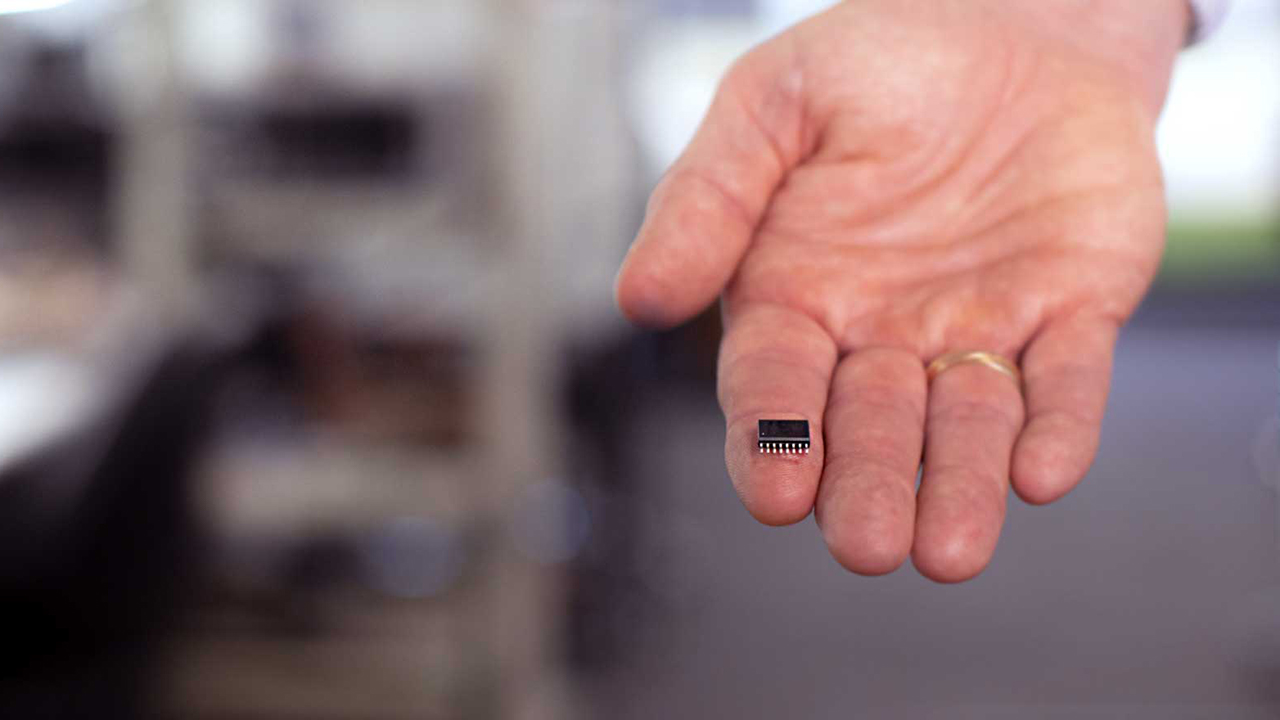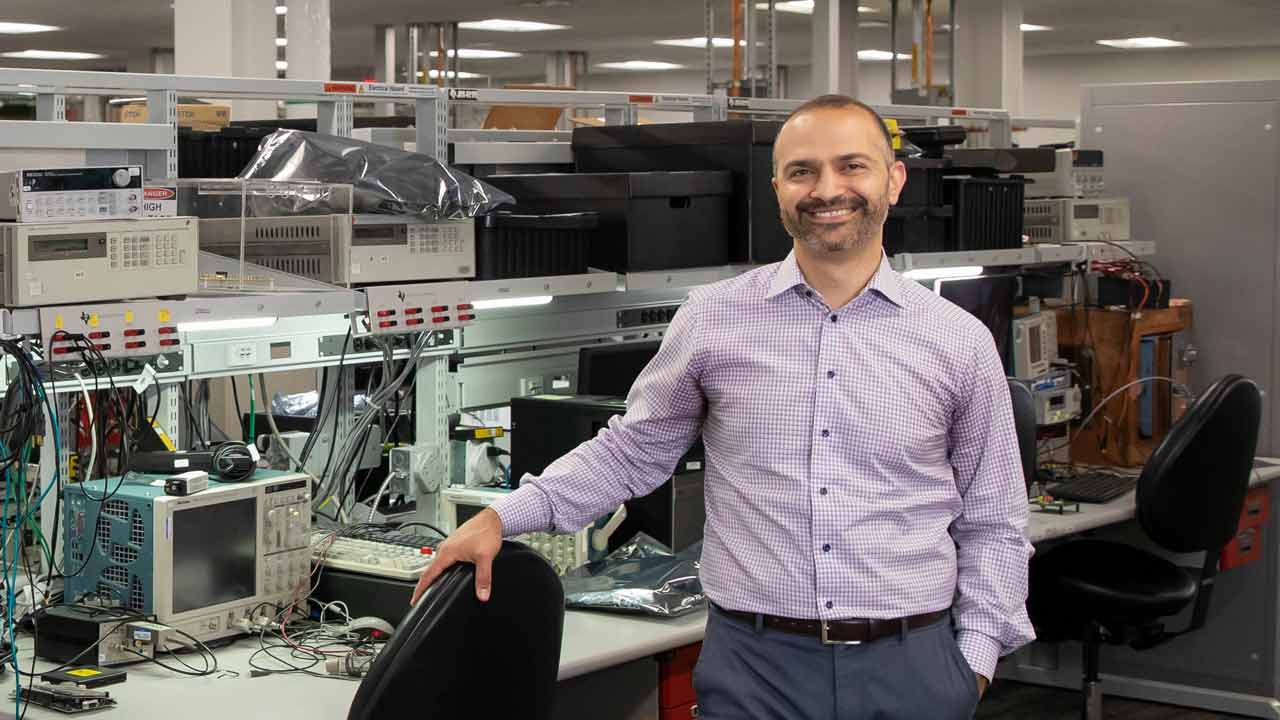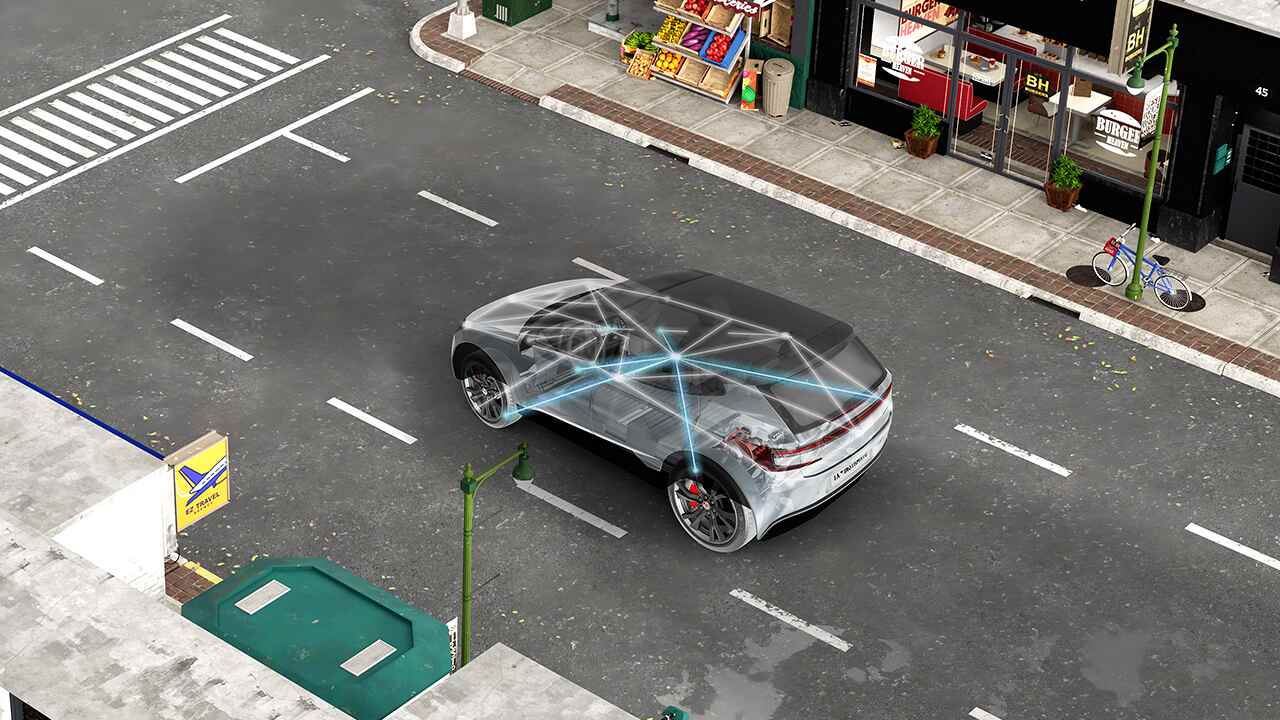Our insatiable appetite for electricity brings challenges to pack more power in a smaller space, all while reducing system costs

When we advance power density innovation to help engineers pack more power into smaller spaces, businesses and consumers benefit from more efficient, longer-lasting electronic devices and more reliable digital connections.
We expect our electronic devices to work whenever we want, and wherever we need. They’re powered up in front of us from early morning until late evening, calling into virtual meetings, streaming our favorite television shows and keeping us connected.
“Our current environment is all about accessibility to one another through technology,” said Cecelia Smith, who leads the boost & multichannel/multiphase DC/DC team at our company. “Think about how much you rely on your laptop and smartphone day in and day out, and also videoconferencing applications made possible by servers in the cloud. It’s all driving a need for more efficient power delivery.”
Even before the widespread transition to working from home amid COVID-19 – in the U.S., nearly half of the workforce is currently operating remotely (1) – demand for digital services had soared, along with the need to retrieve and store data efficiently. Several market trends – including vehicle electrification, the ongoing 5G rollout and increased demands on the energy grid – drive the growing appetite for both data and power.
Greater power density – the ability to pack more power into smaller spaces and use it more efficiently – is key to improving our electronic devices, strengthening our digital connections, upgrading our driving experiences and more.
“Helping the world to do more with less power is critical because our desire for more data and more connected devices is not slowing down,” said Steve Lambouses, who leads the high voltage power team for our company. “Improving power density is a key care-about in every market, such as the rollout of 5G systems or the increasing popularity of electric and hybrid electric vehicles. People expect to see a large increase in performance, like data download speeds or vehicle range per charge, but they don’t want to see an increase in battery size or power consumption for it. They also expect new technology to be more reliable and less costly.”
Here are three ways semiconductor technology is making power work smarter and fit smaller to improve our lives:
Same space, more efficient systems
Data centers powering your internet searches, protecting your email from virus attacks and supporting your video calls are reaching sizes of 50,000 square feet or more. With limited space to expand, engineers are challenged to make existing servers meet demand.
“There’s a surge in enterprise computing right now because of all of the people working from home, and that’s accelerating the increasing need for additional cloud space,” said Mark Gary, who leads the analog power products team at our company. “Data centers are requiring more and more power. Those racks inside the server room are not changing size, so we have to get more power in a smaller space.”

At the same time, removing heat is critical, since higher temperatures can increase operating costs, interfere with networking signals and lead to premature equipment failure. After nearly a decade of innovating on the same device – with each improvement building upon the last – the buck switching regulators team launched a power chip that engineers can stack together for more power while spreading out generated heat.
“Since introducing the first product in this family in 2011, we’ve doubled the power density in the same footprint,” Mark said. “That’s huge for the data center market and also for the base station piece of the 5G infrastructure rollout. We need to be able to deliver more power to the small radio access points placed on street lights and power poles – the backbone of 5G networks – to enable faster data transmission, all without increasing their size.”
Higher efficiency GaN, more affordable electronics
Imagine hundreds of thousands of those 5G radio access points on power poles throughout the U.S., each with an electric fan cooling the power supply that’s controlling a neighborhood’s internet connection. Each time a fan stops working, maintenance crews must deploy to get your connection back up and running.
The workhorse of any power-management system is an electrical switch that rapidly turns power on and off. Gallium nitride (GaN) switches at a much higher frequency than silicon, which increases efficiency and reduces the overall space needed for the power supply. It also removes the need for that electric fan to cool it.
“GaN creates the opportunity for electric vehicles, industrial systems, medical equipment, consumer electronics and aerospace and defense systems to become smaller, more efficient and more reliable – and to be produced at a much lower cost,” Steve said. “We see customers increasing the output of their power supplies by two to three times without adding cost or increasing size.”

The space reductions have a ripple effect: Lowering costs through less physical material, fewer components and more solution integration. This translates to more affordable and more efficient electronics for consumers, along with opportunities to add in more features that improve the user’s experience.
“A lot of different markets are driving the need for power density innovations like GaN technology,” Mark said. “In automotive, GaN has the potential to make electronics smaller, generation after generation, to reduce weight and cost in the vehicle – helping carmakers meet the ever-growing demand for improving fuel economy and lower carbon dioxide emissions.”
Tiny chips, big solutions
Pushing more power into smaller spaces – such as medical equipment, remote sensors, or test and measurement instruments – makes integrating components crucial.
Medical patient monitors, for example, require components that shield people from dangerous voltage levels and reduce electromagnetic interference (EMI) – a phenomenon of all electronic devices radiating signals that disturb one another.
A chip the size of your fingernail has been designed to work double-duty, isolating power from the patient and reducing EMI without extra components. This allows the circuitry around it to get a whole lot smaller.
“Our integrated transformer solution reduces EMI, which is a very big issue that customers will spend a lot of money to address,” Steve said. “Now they don’t have to spend extra money or take up more space, which results in a denser solution you can place into smaller devices.”

That means health monitors can become portable and wearable, giving patients greater freedom to be mobile.
“The opportunity to help the world do more with less power is exciting because the challenges are real across many applications and markets,” Cecelia said. “As engineers – and also as consumers – we understand the need for more data, more connected devices in a smaller footprint with lower cost. We’re coming to the table with power management solutions to meet those needs and challenges.”
Living our passion to create a better world
Driving down the cost of power components is one example of how TI innovators are living our company’s passion to create a better world by making electronics more affordable through semiconductors. As each generation of innovation builds upon the last to make technology smaller, more efficient, more reliable and more affordable, new markets open and it becomes possible for semiconductors to go into electronics everywhere. At TI, we think of this as Engineering Progress. It’s what we do and have been doing for decades.
(1) https://news.stanford.edu/2020/06/29/snapshot-new-working-home-economy


